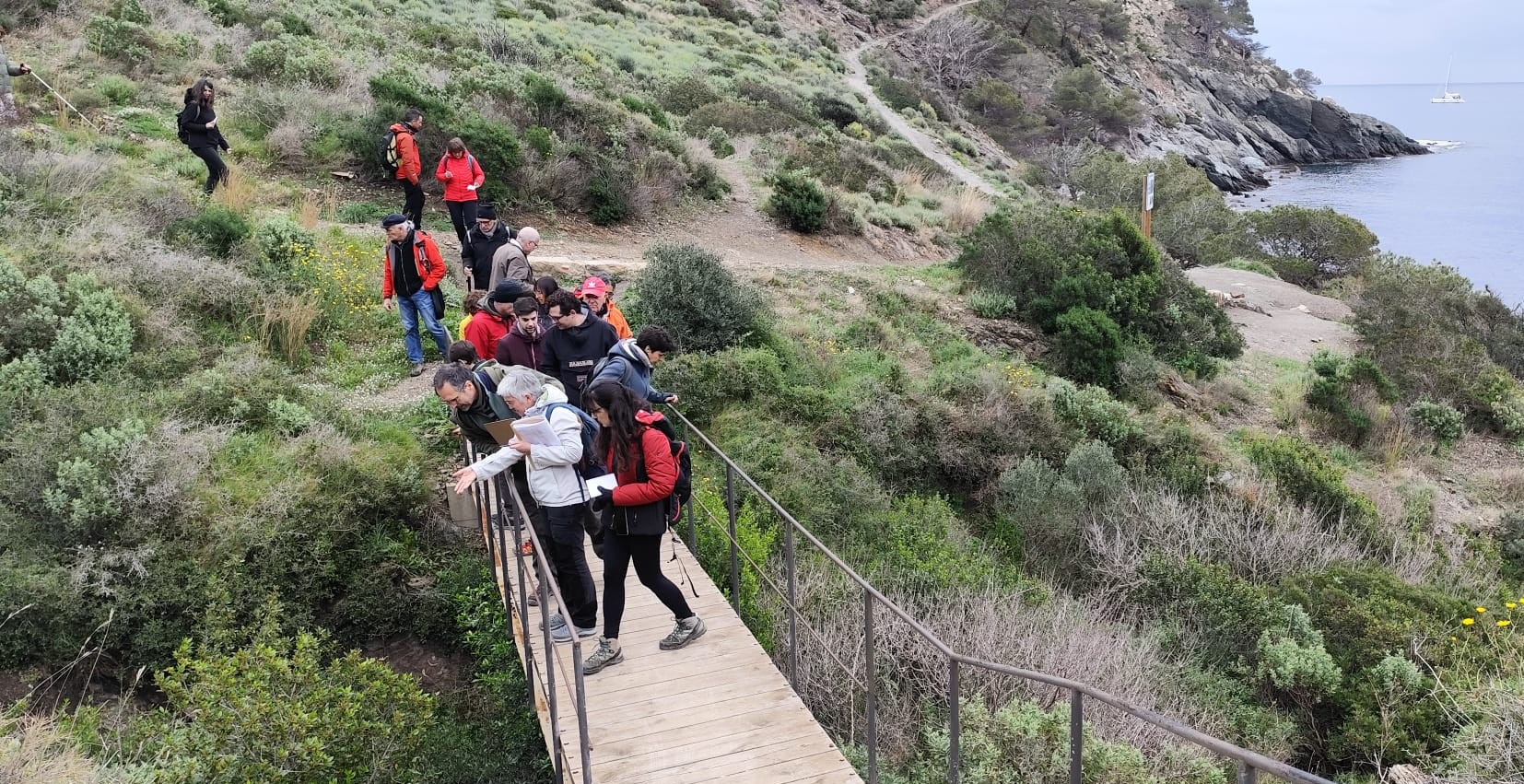
Last Saturday 15th March, the first field trip of 2025 took place in Roses. Despite the weather, 14 participants joined the trip to Cala Murtra starting at the pàrquing next to the observation deck of Falconera and making several stops. The first stop was at an Aleppo pine grove where there was mossy stonecrop (Crassula tillaea) and it was used to explain the physiology of this plant and its mechanisms to withstand growing in full sun.
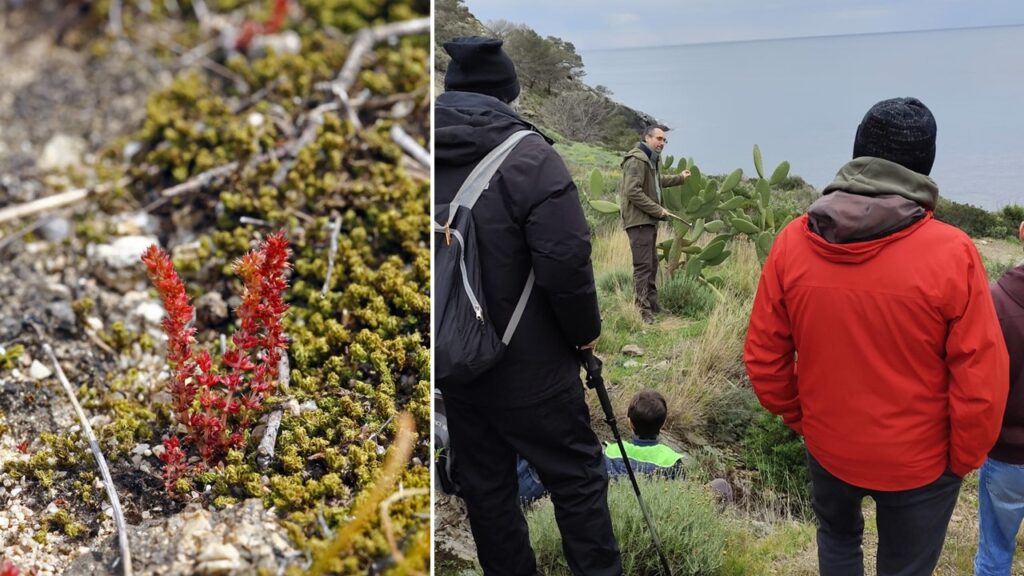
Specimen of Mossy stonecrop (Crassula tillaea) and Francesc Caralt (Flora Catalana) explaining how to identify a prickly pear (Opuntia ficus-indica).
Following the way they stopped at an area where “albaida” (Anthyllis cytisoides), an erect bush, and kidney vetch (Tripodium tetraphyllum), a creeping annual plant, were growing together. Their singularity is that for many years these two closely related species were considered both of the same genus (Anthyllis) with the other kidney vetch scientific name being Anthyllis tetraphylla.
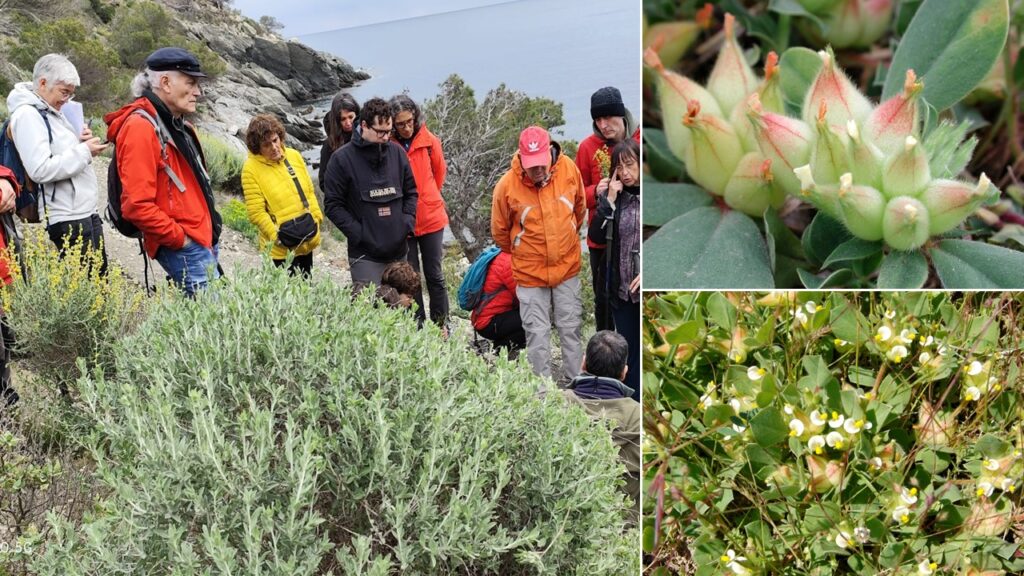
On the left are an albaida bush (Anthyllis cytissoides) and on the right are fruiting and flowering kidney vetch specimens (Anthyllis tetraphylla).
From the Cistaceae family, they found grey-leaved cistus (Cistus albidus), whose leaves were long ago used as a tobacco substitute, and the narrow-leaved cistus (Cistus monspeliensis) a very praised plant in the cosmetic industry, especially for dermatological products for its high flavonoid and tannin content that tightens the skin when applied.
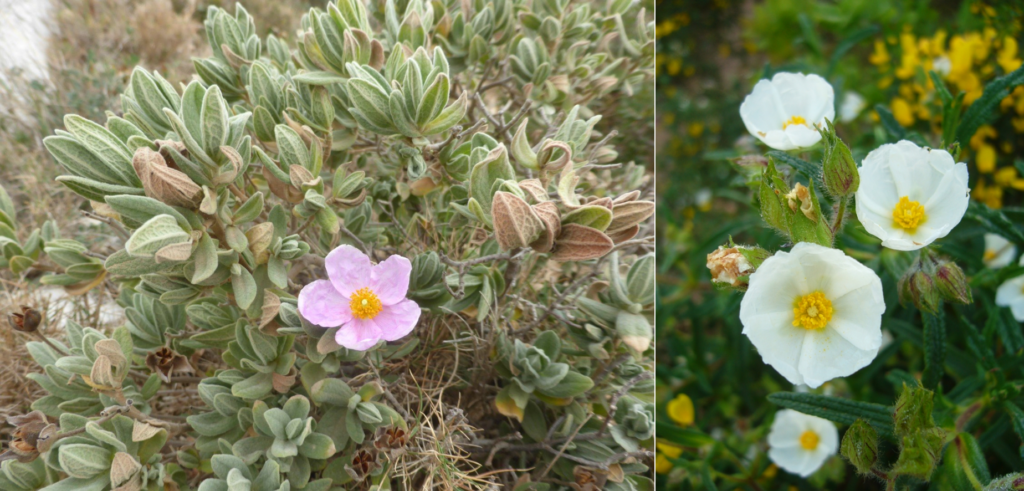
On the left is a grey-leaved cistus (Cistus albidus) with its characteristic woolly leaves and on the right a narrow-leaved cistus (Cistus monspeliensis) with dark and sticky leaves.
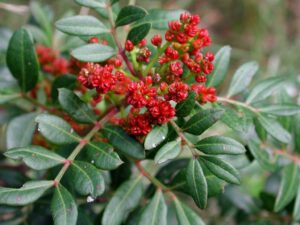
Specimen of lentisk, or mastic (Pistacia lentiscus) in bloom. Branches with flowers are usually collected to make flower bouquets.
Another plant with valuable medicinal uses found was the lentisk, or mastic, (). In vitro, it has shown great antibiotic properties against some bacteria such as Porphyromonas gingivalis and Helicobacter pylori. Besides their potential health benefits, it is also used ornamentally in flower arrangements. This business leads to illegal recollections of this plant around the country affecting directly our populations. Flora Catalana is already trying to raise awareness about this situation, yet it is still difficult to stop this sort of activity.
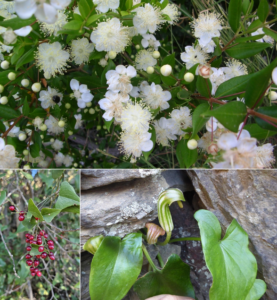
Above: myrtle (Myrtus communis) Below: sarsaparrilla (Smilax aspera) and friar’s cowl (Arisarum vulgare).
At the myrtle thicket, where the predominant species gives name to this habitat, the myrtle (Myrtus communis) they stopped to observe what species compose the typical vegetation of this habitat that coexists with the l’HIC 1240 that the LIFE medCLIFFS is trying to protect. The main species growing in this habitat in different strata are the lianas of sarsaparilla (Smilax aspera) and covering the ground it is common to find friar’s cowl (Arisarum vulgare).
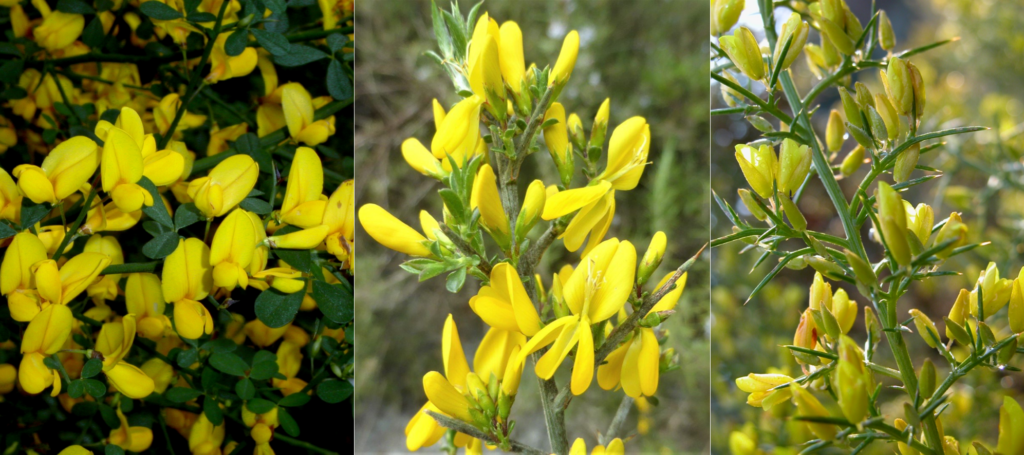
Another typical bush that can be found in a myrtle thicket is the thorny broom (Calicotome spinosa) which should not be confused with other brooms like Genista scorpius or the gorse, Ulex parviflorus. They can be easily mistaken at first as they are thorny bushes with yellow flowers, typical in the Fabaceae family.
As temperature rises and sunny days are coming we asked the volunteers to pay attention to the plants around them, especially the sarsaparilla (Smilax aspera) leaves and the Aleppo pine (Pinus halepensis) cones. The leaf shape and size of the sarsaparilla can vary according to water availability. After seeing them in a time with abundant water storage in the ground they will have to see them in summer, during the drought season. When water is short they will find how the leaves curl and become more vertical so they receive less light to avoid water loss through evapotranspiration by doing so the leaves can retain the morning dew and let the condensed water drip and fall to the base of the plant and absorb this water through their roots.
When looking at the pines they explained the seed dispersal mechanisms of this species, a mechanism oriented to wildfires. The long and compact pinecones last many years before opening and releasing the winged seeds that will be scattered through the wind. Partly, they remain closed in case of a fire episode. These cones can withstand very high temperatures and the accumulated pressure generated inside, when the tree is burning, eject these cones from the plant, scattering the fruits away from the mother tree. After the fire is over the cones open and free the seeds. That is why this is one of the first tree species that grow after a fire. However, without the pressure of wildfires, the tendency is that the holy oak (Quercus ilex) replaces the Aleppo pine in periods of around 200 years.
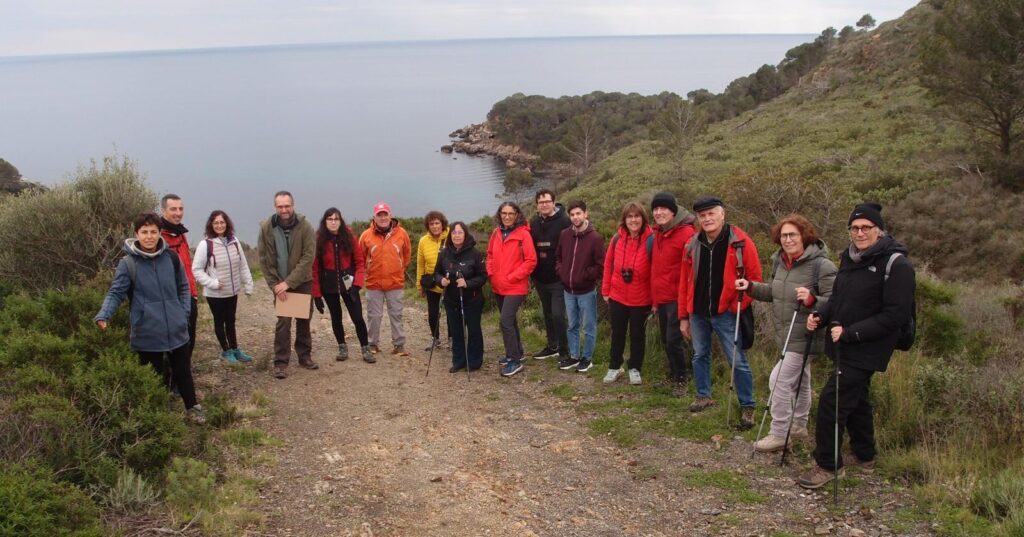
Final photo of the participants in front of Cala Murtra.
The trip ended with a group photo and a reminder that the next field trip will be on 5th April at L’Escala, 11-13 h. During the trip, we will observe more local flora and focus on showing the only Fallopia baldschuanica observation of the project.
Text: Edgard Mestre
Photos: Francesc Caralt, Flora Catalana and Edgard Mestre



